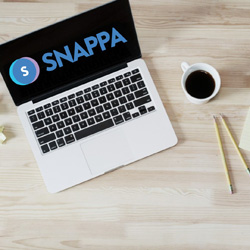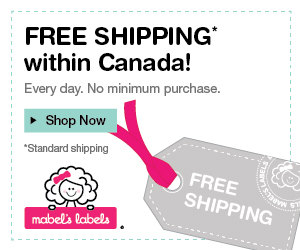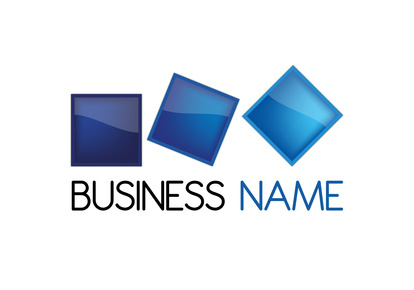How Solopreneurs Can Use Omni-Channel Marketing to Increase Brand Awareness
This page may contain links to Amazon.com or other sites from which I may receive commission on purchases you make after clicking on such links. Read my full Disclosure Policy

Are you a solopreneur? The term solopreneur has different meanings since it was coined some time ago, but the general definition of the word is a person who runs their business on their own, with no formal employees. This includes freelancers and consultants, a fast-growing segment of the American workforce. One of the most difficult aspects of being a solopreneur is getting noticed within your niche. You may be exceptional at what you do, but that doesn’t matter one bit if no one knows you exist. For this reason, much of becoming a solopreneur involves marketing efforts to increase awareness of your own personal brand. With so many social media options available, there are many opportunities for leveraging multi-channel strategies to maximize awareness. But how?
What is Omni-Channel Marketing?
Omni-channel marketing is a concept most often used for retail businesses, but it is a helpful tool for solopreneurs as well in the digital marketing space. Omni-channel marketing uses consistent messages integrated across all channels (social media, paid advertising, videos, etc.) to create a brand image and eventually a call to action. For solopreneurs, this is typically all conducted online, which is where most service-based businesses find customers. So how can solopreneurs leverage multi-channel marketing?
Using Paid and Unpaid Approaches
Because there are so many platforms and opportunities for multi-channel marketing online, you’ll want to consider a broad mix of paid and unpaid approaches. Some of the most important channels (and their uses) include:
- Social media: Fostering engagement and awareness; word of mouth; content promotion
- Blog posts: Attracting audiences, brand voice, establishing authority and providing value
- Google AdWords: Drawing potential customers through user search terms
- Video ads: Multimedia engagement, recall and awareness
- Email marketing: Nurturing prospects; increasing engagement and ongoing loyalty
Omni-channel marketing can help solopreneurs get top-of-mind brand awareness by engaging audiences across platforms.
Trying New Tools for Tracking
Brand awareness is a huge component of any marketing campaign, but up until recently, it’s been extremely difficult to track how much of an impact individual marketing efforts have on awareness. Google’s Brand Lift is one of the new tools that allows the tracking of brand awareness impact from YouTube videos. Think with Google notes how big brands have used this tool to change their ads almost in real time to appeal to their audiences. Ads on the most popular YouTube channels almost universally had high ad recall (an average of 80%), but even more exciting was the lift in brand awareness—about 17%, even for already-popular brands. Testing and refining ads was also much easier, because changes could be made quickly based on the data collected.
There are other tried-and-true tools for tracking as well, of course, such as Google Analytics, but Brand Lift is an exciting development in tracking the direct impact of campaigns on overall awareness and brand loyalty.
Optimizing for Different Audiences
Omni-channel marketing by definition involves using many different platforms and channels to create brand awareness, but that doesn’t mean you’ll be giving each platform equal attention—it simply isn’t possible or useful. Instead, you’ll want full profiles on each major social platform, then use what you know about your potential customers to choose where you’ll place your focus. Social Media Examiner explains why the demographics of a social network is important:
LinkedIn is consistently the best social outlet for B2B lead generation, and Google+ tends to attract professionals in the technology space.
Keeping generalizations like these in mind, once you know your target audience, you can focus your advertising dollars on the right networks and target visitors who are more likely to engage with your brand. By doing so, you’ll have customers coming back again and again as you build up brand loyalty over time.
Keeping it Consistent
Different audiences and customers prefer different channels, so it is important that all messages are kept consistent across each platform. Keeping the same voice, type of content, and values helps build trust for those who use multiple platforms and prevents your message getting muddled. Brand awareness is highly dependent on consistency, so creating style sheets, schedules and editorial calendars is essential to regular and consistent engagement, particularly if you ever hire freelancers to take some of the pressure off yourself.
Setting Up Measurements
Every business has different metrics that matter, so segmenting out your audience is a necessary step for isolating the specific metrics that matter. If you don’t break down your data, it will be difficult to determine which factor was the most important in your conversions and awareness—and which channel helped you achieve your goals.
Testing & Refining
One approach may be working well, but that doesn’t mean it couldn’t be working better. With so many metrics available to find out how your omni-channel marketing is working, there’s no excuse to avoid testing different ad types or videos to find out what works best for each target audience. Testing will help you make your advertising dollars go further by showing you what you should be putting money into—and what could use refinement. Remember—there are always more potential customers!
Photo © georgejmclittle / depositphotos











Great post! I have clients that want this type of social media marketing. So to do this, I determine through their insights what their clients interests are and then craft posts to tie that to my clients services. thought it should be said that it should be assist every quarter to see if anything changed.
Ideally, we’ll be monitoring all our marketing channels on a regular basis to make sure they’re still working for us, but that’s an excellent point – thanks for sharing!